Sorry, Doomsday Forecasters, Earth’s Mass Extinctions Occur At Random
Asteroid strikes and supervolcano eruptions may yet have patterns to them, but the extinctions we’ve experienced appear to have occurred at random.
Throughout the history of life on Earth, there have been catastrophic events that have wiped out tremendous numbers of species. These mass extinctions wipe out a significant percentage of all the species on Earth, up to and even over half of them, when they occur. Huge events have occurred many times in Earth’s past, like the great oxidation event that resulted in a snowball Earth, the enormous impact that wiped out the dinosaurs, or, most devastating of all, the Permian-Triassic behemoth that wiped out 96% of marine species, along with 70% of land species.
All told, in just the last 260 million years, eight major extinction events have been identified. Many scientists have speculated that these events don’t occur at random, but have a periodic cause: like Earth’s motion through the Milky Way or a geologically-driven effect. As exciting as these possibilities are, there’s no scientific motivation. There’s no periodic effect observed, as the science shows these extinction events occur at random.
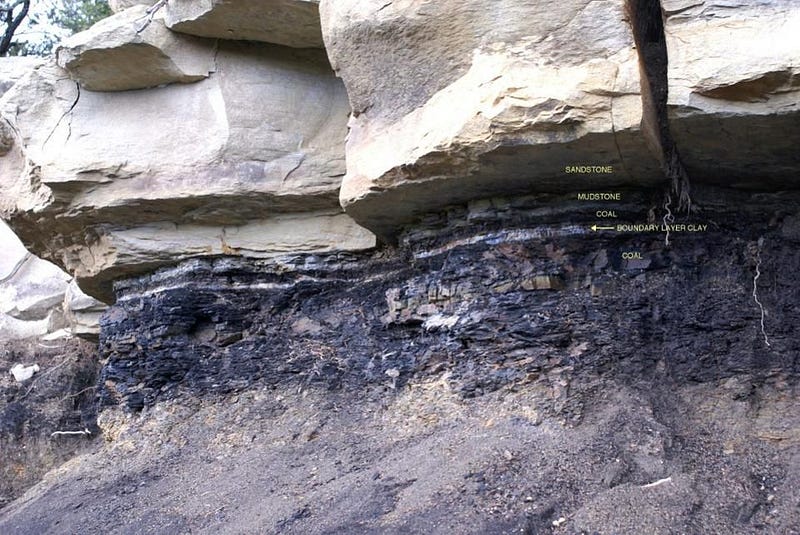
The way you determine when mass extinctions occur is by looking at the marine fossil records. When species that have been around for a long time suddenly stop appearing, you have an extinction event. If more than 10% of your species go extinct all at the same approximate time, you have a candidate mass extinction event. As the fossil record became more and more complete in the 20th century, scientists began to think that these events might not be random, but may be more likely to occur at one particular set of time intervals. The idea of periodic mass extinctions have been around ever since.
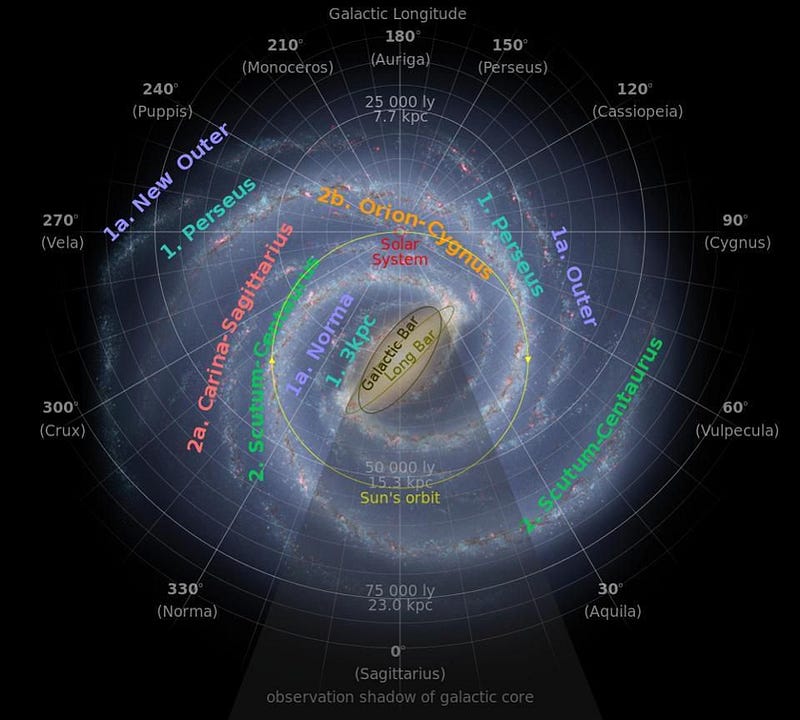
In particular, the identified times for mass extinction events are as follows:
- 11.6 million years ago, Middle Miocene.
- 37.8 million years ago, Mid-Late Eocene.
- 66 million years ago, End Cretaceous.
- 93.9 million years ago, Cenomanian/Turonian.
- 145 million years ago, Jurassic/Cretaceous.
- 182.7 million years ago, Pliensbachian/Toarcian.
- 201.3 million years ago, Triassic/Jurassic.
- 252.2 million years ago, End-Permian.
If you plot these out, you might start to think, looking with your eye, that if you squint, you can see a periodic-style pattern.
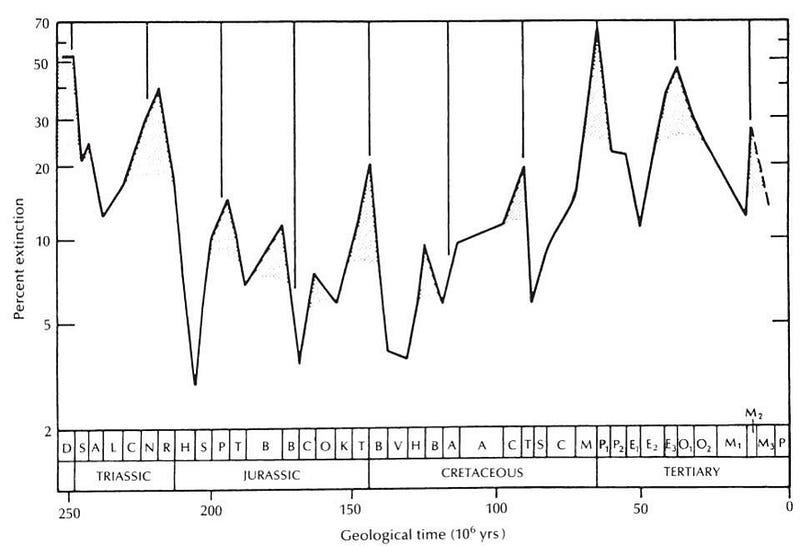
People have long speculated, for as long as this idea has existed, about what could have possibly caused a periodicity to our extinctions like this. The overwhelming evidence for a giant impactor 65–66 million years ago to wipe out the dinosaurs led many to speculate that impact cratering would see a significant uptick as the Earth and Solar System passed through the galactic plane, while others looked to the crustal carbon cycle for an explanation. Certainly, the planet does go through geological cycles, and there’s nothing more cyclic than our orbits and revolutions through the Universe.
But is this a real effect? We can’t trust our eyes, nor our intuition. What we need to do is test this out, mathematically. Looking at the most modern data available, here’s what we can see.
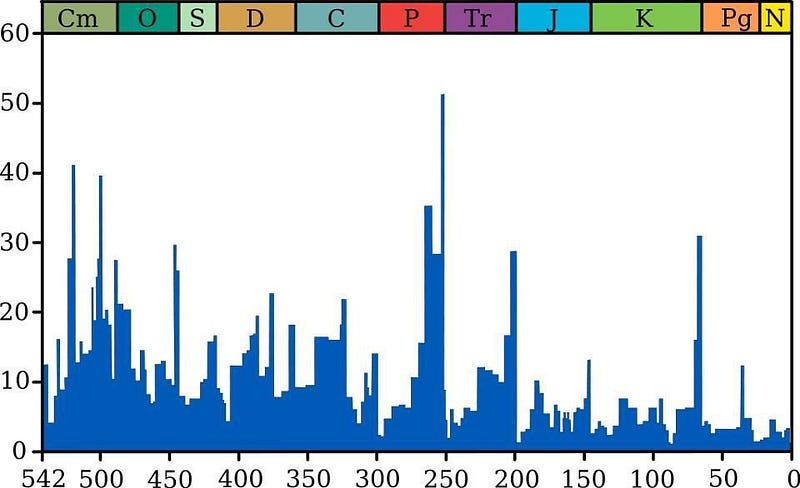
We can look at the major extinction events on Earth as evidenced by the fossil record. The method we can use is to count the number of genera (one step more generic than “species” in how we classify living beings; for human beings, the “homo” in homo sapiens is our genus) in existence at any given time. We can do this going back more than 500 million years in time, thanks to the evidence found in sedimentary rock, allowing us to see what percent both existed and also died off in any given interval.
We can then look for patterns in these extinction events. The easiest way to do it, quantitatively, is to take the Fourier transform of these cycles and see where (if anywhere) patterns emerge. If we saw mass extinction events every 100 million years, for example, where there was a big drop in the number of genera with that exact period every time, then the Fourier transform would show a huge spike at a frequency of 1/(100 million years). So let’s get right to it: what does the extinction data show?

There is some relatively weak evidence for a periodicity, under this method, with a frequency of 140 million years, and another, slightly stronger piece of evidence for increased events at 62 million years. The periodicity we thought might be their earlier, on 26 million year timescales, doesn’t appear. In fact, if you look at the mass extinctions we talked about over the past 260 million years, and compare them to the cratering rate (the leading idea for what causes most extinctions), you’ll find that they don’t match very well at all.

If you include these smaller, marine-based-only extinction events, though, what happens to the analysis? What do our Fourier series’ show, and is there a spike at any interval indicating a periodicity in mass extinction events? Or do they really, truly occur at intervals that are indistinguishable from random?
In 2013, the strongest evidence yet was put forth by scientists Fabo Feng and Coryn Bailer-Jones, who took the full suite of available data and looked at what the likelihood was of having a periodic effect, versus a uniform (random) effect. For the available data, here’s what they found.
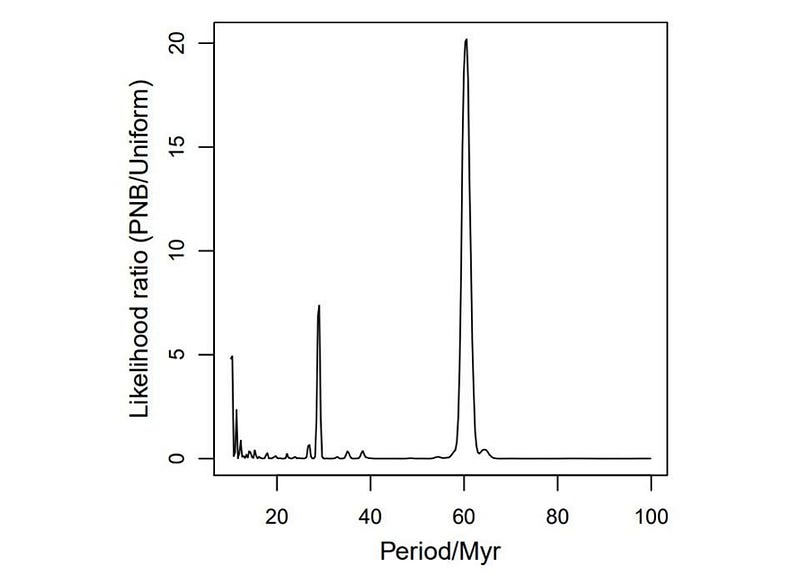
At first glance, you might see three candidate effects: evidence for periodic extinctions at around 6, 30, and 62 million year intervals. But this isn’t true! The 62 million year periodicity is the largest effect we can see, but even at that, with a likelihood ratio of 20:1, means we only have a two sigma effect here in terms of statistical significance. It suggests that we might be more likely to have a mass extinction at approximately 62 million years before-or-after another mass extinction event, but even that evidence is pretty weak.
Moreover, any events that occur with a periodicity that’s a fraction (like half) of the original interval are known artifacts of this type of analysis; the less significant ~30 million year periodicity is likely to be a red herring. If we do the full Fourier analysis, here’s what we find.
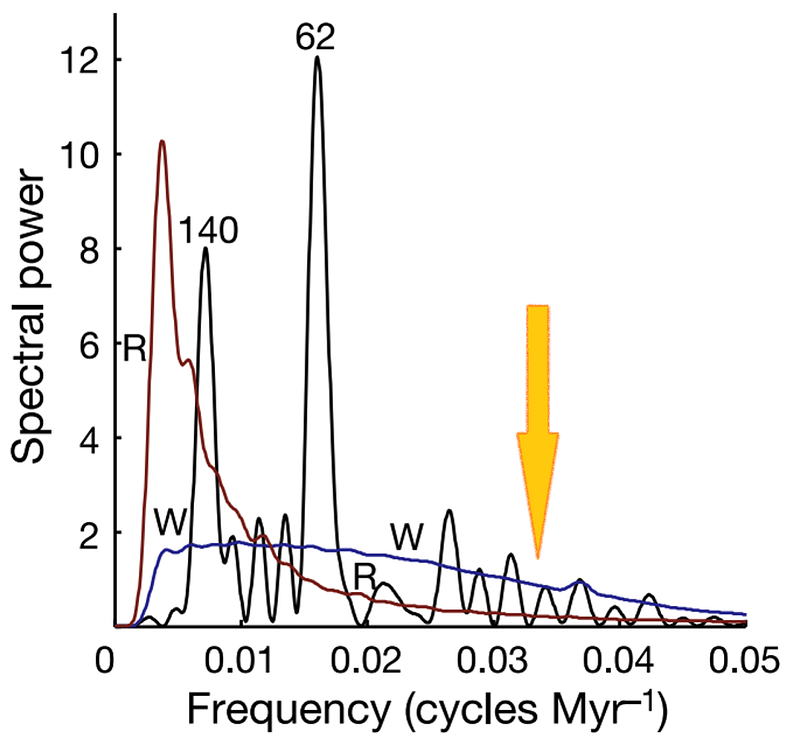
The timescale most often cited for periodic mass extinctions, this 26–30 million year periodicity, has absolutely no evidence for it. Moreover, Feng and Bailer-Jones explicitly state the following (emphasis mine):
We find that none of the models tested — including periodic, quasi-periodic and orbital-based — explain the discrete data sets better than a Uniform model. In other words, the time distribution of mass extinction events is consistent with being randomly distributed in time. There is no need to resort to anything more exotic.
The idea that mass extinctions are periodic is an interesting and compelling one, but the evidence simply isn’t there for it. The idea that the Sun’s passage through the galactic plane causes periodic impacts tells a great story, too, but again, there’s no evidence. Additionally, there might be some evidence that there’s a connection between carbon dioxide levels and the carbon crustal cycle, but the connection to mass extinctions just isn’t strong enough.
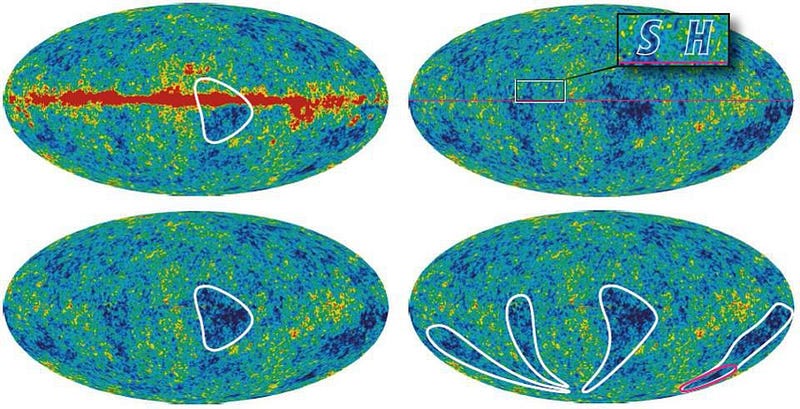
Unfortunately, it’s human nature to seek patterns wherever things occur, but in this case, the evidence is far too weak to bet against randomness in any way. It’s important to remember that just because we don’t see evidence for periodic events doesn’t mean they don’t occur, but it’s important to not go chasing after a phenomenon that doesn’t have the evidence supporting its reality. Asteroid and comet strikes may have increased likelihoods at certain times, and there may be a periodic effect for CO2 levels and the carbon crustal cycle, but neither one has any evidence linking them to mass extinctions. When it comes to catastrophic events for the planet, and the species that inhabit it, randomness is as good as it gets.
Ethan Siegel is the author of Beyond the Galaxy and Treknology. You can pre-order his third book, currently in development: the Encyclopaedia Cosmologica.





